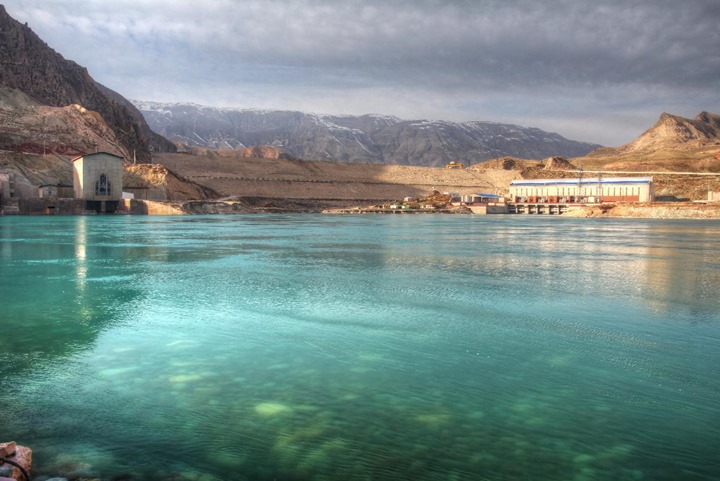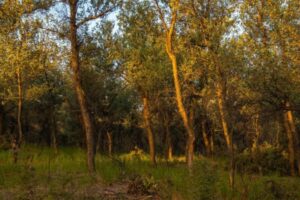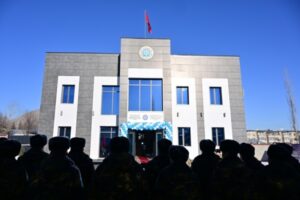Against the backdrop of discussions in Dushanbe on expanding Russian-Tajik cooperation in hydropower with the participation of Deputy Head of the Russian Ministry of Energy Roman Marshavin, the World Bank (WB) approved the allocation of $650 million for the construction of the Rogun hydropower plant. These two events, according to experts, emphasize the complexity and multifaceted nature of the energy situation in Central Asia, where issues of bilateral cooperation are closely intertwined with large-scale international projects that raise environmental concerns.

The key topic of the talks between Deputy Head of the Russian Ministry of Energy Roman Marshavin and Minister of Energy and Water Resources of the Republic of Tajikistan Daler Juma and Minister of Finance Faiziddin Kakhkhorzoda was the operation of the joint venture Sangtuda HPP-1 and the repayment of the Tajik debt to Russia for the supplied electricity in the amount of 333 million dollars.
Recall that the Sangtudinskaya HPP-1 was built at the expense of the Russian Federation and Russian energy companies within the framework of strategic cooperation with Tajikistan in the field of electric power. Russia’s investments in the construction of the HPP exceeded 16 billion rubles. The first hydropower unit of the HPP was commissioned in January 2008. The share of Russian companies in the authorized capital of the joint-stock company is 75% minus one share, the share of Tajikistan is 25% plus one share, according to the HPP website.
The energy company Barki Tojik (Energy of Tajikistan) had already accumulated a debt of $30 million by 2009. Four years later, the debt increased to US $66m. Unable to pay it off, Dushanbe offered Moscow to write it off in exchange for ratification of an agreement on the 201st military base of the Russian Federation stationed on its territory. Since then, the issue of repaying the debt to the Russian Federation has been raised repeatedly, but to no avail.
Probably, as Central Asia expert and hydro-energy engineer Andrei Zakhvatov said, the Tajik side hopes for debt restructuring. The issue of System Operator obtaining the status of a full member of the Coordinating Electricity Council of Central Asia (CEC CA) was discussed at the talks, the expert explained. The expert explained that this is a consultative body to coordinate the joint work of Central Asian energy systems, established in 2004 on the initiative of the Kazakh side. It includes heads of state-owned national electric power companies of the participating countries: JSC “Kazakhstan Electricity Grid Management Company”, JSC “National Electric Grids of Uzbekistan”, JSC “National Electric Grids of Kyrgyzstan”, JSCHC “Barki Tojik”. The Russian System Operator participates in the work of CES CA in the status of an observer. Russia is negotiating with Tajikistan on the construction of wind power plants in the country. Russia is in no hurry to invest in large hydropower projects, such as the Rogun hydropower plant, because it is an expensive project – $6.2 billion and carries considerable environmental risks.
However, the World Bank, in its recent report on Tajikistan’s economy, noted that the completion of the Rogun hydropower plant, designed to ensure the country’s energy security, jeopardizes the republic’s fiscal stability.
However, in a new report published in early December, the WB called Rogun “the core of the regional electricity market in Central Asia. Completion by 2037 will meet the country’s domestic energy needs, contribute to economic growth and increase export revenues, it said. The plant, reaching full capacity by 2034 (3.78 GW), will increase water resources by 13.3 billion cubic meters by 2037 and provide reliable power supply for millions of people and businesses. “This will provide flood protection for the lower cascade facilities and increase the resilience of agricultural consumers during droughts, as well as provide reliable and affordable power supply for approximately 10 million people and industries that experience power shortages during winter. In short, the Rogun hydropower plant is favorable from both development and adaptation perspectives,” the report emphasizes.
About 70% of the energy produced is planned to be exported to Kazakhstan and Uzbekistan, replacing fossil fuel power generation. The Rogun HPP will contribute to the region’s energy security and the integration of renewable energy sources.
The World Bank, following a December 17 meeting in Washington, D.C., made a positive decision to allocate US $650m to Tajikistan for construction of the Rogun hydropower plant. However, as Nezavisimaya Gazeta has learned, “financing for the high-risk project was approved in advance, with its reassessment in July 2025.” The fact is that on the eve of the WB meeting, the international environmental coalition “Rivers without Boundaries” presented its report analyzing alternative options for the completion of the Rogun HPP project in Tajikistan. Without this, as the report notes, it will not be possible to choose the most effective option for completing the project, which would reduce the risks of negative consequences and increase the return on the huge investment of $6.4 billion needed to build the 335-meter-high dam.
As environmentalists argue in their report, even if the decision is made to complete the Rogun hydropower plant in the maximum option with the construction of the highest dam in the world, the acute problems that the giant hydropower plant is being built to overcome will still remain unresolved. In particular, fan blackouts in Tajikistan will continue until at least 2036.
The creation of a reservoir of maximum size will multiply the risks of negative impacts of the Rogun HPP downstream: on the UNESCO World Heritage site “Tugai Forests of the Tigrovaya Balka Reserve”, on the last populations of endangered species of shovelnose sturgeon in the Vakhsh, and on the fertile plains along the rivers, where at least 7 million people in Tajikistan, Uzbekistan, Turkmenistan and Afghanistan live and depend entirely on irrigated agriculture for their livelihoods.
The report demonstrates that even in the current realities, this negative scenario can still be avoided. The same amount of financing, but spent on the construction of a lower dam for the Rogun HPP, combined with the development of solar power plants interconnected into a single energy complex using the project funds saved in this way, will result in significantly less economic, social and humanitarian damage from the realization of the Rogun project. In particular, reducing the design height of the Rogun HPP dam by 70 meters will avoid the resettlement of about 40,000 local residents, and thus forced resettlement will affect only one-third of the number of people scheduled to be resettled now.
Victoria Panfilova




